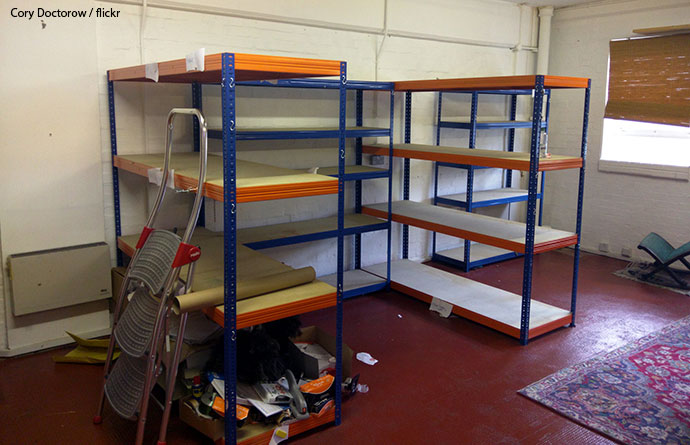
- How to Move a Home-Based Office to Another Location
- Create an Office Moving Timeline and Calendar
- Label Every Moving Box
- Pack Seldom Used Items First
- Keep Regularly Needed Things Separate
- Connect Broadband and Have a Plan B
- Ensure All Your Data is Backed-Up
- Choose a Moving Date Wisely
- Photograph and Label All Electronic Connections
- Moving Office Furniture
- Change of Address Notifications
- Home Moving Insurance
- Moving Day Tips
- How to Pack Your Stock Ready to Move
- How to Hire a Reputable Moving Company
Moving home can be stressful and costly in itself, but throw into the mix the fact that your home facilitates your ability to have an income, and things get a whole lot more complicated.
If you are an online retailer who works from home, or you simply just rely on the internet to work from home, then moving home could disrupt your earning potential, not to mention the inconvenience to your customers.
Just what you do not need when your home moving costs are already piling up.
So here we will create a moving plan to ensure a smooth and seamless transition from the old to the new home office.
Below you will find advice on moving your home office as well as packing tips for your home office.
We will assume that the actual location of your home office has been decided upon, and all that remains is to pack and move from the old office to the new office, whilst ensuring that your customers and income remain unaffected.
Depending upon what your home-based work is: whether a virtual service, a computer or internet-dependent job, or a physical product, we will split this into two sections, how to move a home office and how to move your business stock.
You may also like to read: All You Need to Know About Moving Home and Broadband. From who the fastest internet providers are to the parts of the country with the best internet connection to how to move your broadband to a new home, this guide has some invaluable information if you rely on the internet.
How to Move a Home-Based Office to Another Location

Our entire focus here will be to ensure that your customers do not notice an interruption of service and that you can be up and running as soon as possible after moving day.
Try to envisage every scenario and have a Plan B ready, consider what you would do if your internet connection was not available, your office equipment was damaged or lost during the home office move, the electricity in your new home office was not connected, or you could not reconnect your computer peripherals.
Read on to discover some essential tips for moving your home office.
Create an Office Moving Timeline and Calendar
Make a moving checklist for your home office of all the tasks that need to be completed before moving day to ensure you do not overlook anything.
The tasks should also be in a logical chronological order.
You may also like to read: How to Plan an Office or Business Move. If you have a particularly complicated home office or business set up then you may find it better to organise your move using a Gantt Chart. In this guide, we show you how to create and use a Gantt Chart when relocating to new premises.
Label Every Moving Box
Clearly label any moving boxes with the description of the contents and that they are for the home office.
Label which room they should be placed in, fragile, handle with care, or this way up as appropriate.
Pack Seldom Used Items First
Anything that you will not need between now and moving day can be packed away into moving boxes.
This is also a great opportunity to declutter your office of any historical paperwork you no longer need, or reference books for example that have outdated information.
The fewer items you have to move, the cheaper your removal costs will be and the quicker your packing will be.
You may also like to read: How to Pack Books for Moving. In this guide, we show you step-by-step the best ways to protect and move your books during a home move.
Keep Regularly Needed Things Separate
Create a folder for paperwork that you need to have access to daily, or for incoming paperwork that you can file at a later date.
This way you can pack away a larger number of folders to enable you to focus on time-critical matters nearer to moving day.
Pack your folders using the same technique that you used when packing your books.
Ensure that any invoices that need paying on or around moving day are clearly identified. You may want to pay these well in advance of moving day so that they are not forgotten.
Connect Broadband and Have a Plan B
Arrange to have the internet installed at your new home office before moving day to ensure a seamless transition.
If this is not possible, consider getting a mobile hotspot or perhaps using your mobile phone as a hotspot, this will enable you to continue to work until the internet is up and running.
Explore the options available to enable you to get online before the disconnection of your old service, and the installation of your new connection, which is vital to ensure there is no interruption of service to your customers or your work.
If you only need the internet to complete your work, it may be prudent to research the availability of a local internet café, or a wi-fi zone, in your new home town, in case of emergency.
Libraries also usually offer free internet access, if only for one hour at a time, and you will need to be a library member, which you can organise before your move date.
Ensure All Your Data is Backed-Up
Back up everything – twice – at least.
It is best practice to back up to a virtual server and also an external hard drive, that way if there is a failure in one backup system there is a failsafe.
It is also worth emailing files to yourself as well, as another form of failsafe.
Choose a Moving Date Wisely
Identify your weakest trading day or the day when your workload is lowest.
Try to organise your moving day to coincide with the quietest day of your week to minimise disruption.
It may also be an option to move later in the afternoon or early evening if that is your quietest work time.

Photograph and Label All Electronic Connections
Photograph or label any leads and connection points so that you know exactly what reconnects where.
If you can colour code each one that will make life even easier – red lead into red socket, for example.
You may want to have your laptop or PC travel with you, not with the removal company on moving day to ensure that there is no damage.
You may also like to read: How to Pack a Computer for Moving which is a comprehensive guide on how to prepare, pack, and safely move your computer equipment to your new home.
Remove ink cartridges from printers before packing the printer in a box.
Ink cartridges should be placed into two ziplock bags, one inside the other, to ensure that if they do leak during transit they leak into the bag.
Moving Office Furniture
Decide if it is cost-effective or practical to move your office furniture.
It could be that your furniture will not fit into your new office, it will not fit the décor of your new home, or the removal costs are prohibitive and it is cheaper to just buy new furniture.
You may also like to read: How to Move Heavy Furniture. If you are not hiring a removal firm and planning on moving by yourself then this guide on how to safely move heavy and large pieces of furniture will be invaluable.
Change of Address Notifications
Notify suppliers and important contacts of your new address as soon as you can.
Remember to change your delivery address on any websites with a one-click or default delivery address system.
Remember also to update any websites you may trade from with your new address.
Company House and HRMC will also need to be made aware of your new address.
You may also like to read: The Ultimate Change of Address Checklist. Here we have created a comprehensive list of people who will need notification of your change of address including website and contact details for many of those companies.
Home Moving Insurance
Many people under-insure their belongings when moving home so ensure that you have adequate insurance in place to cover your office equipment.
It should also be noted that many insurance companies will not provide cover for any items that you have packed yourself so check your policy carefully.
You may also like to read: Home Moving Insurance – Do I Need It? Inadequate compensation for damaged items on moving day is one of the major reasons that people leave bad reviews for removal companies. This guide tells you all you need to know about home moving insurance so that you are fully covered for your home move.
Moving Day Tips
Have your mobile phone fully charged and ready for moving day. You may also consider having a battery bank fully charged as well just in case.
Don’t forget to put an out-of-office message on your email account for moving day.
You may want to consider preparing an ‘open first box’ for your home office.
This would contain the essentials to get you back up and running before you start to unpack all the non-essential items.
This moving day essentials box may contain your laptop, router, hotspot device, backup drives, printer, and essential contacts list.
This box would stay by your side during the home move and would not be loaded onto the removal van but would travel with you.
You may also like to read: How to Prepare a Moving Day Essentials Box. In this guide, we explain why it is so important to have a moving day essentials box and suggest things that you may like to include in yours.






Share your thoughts by leaving a comment